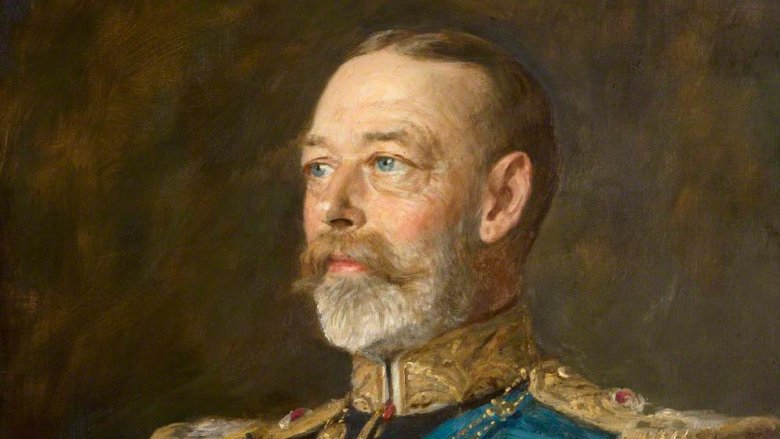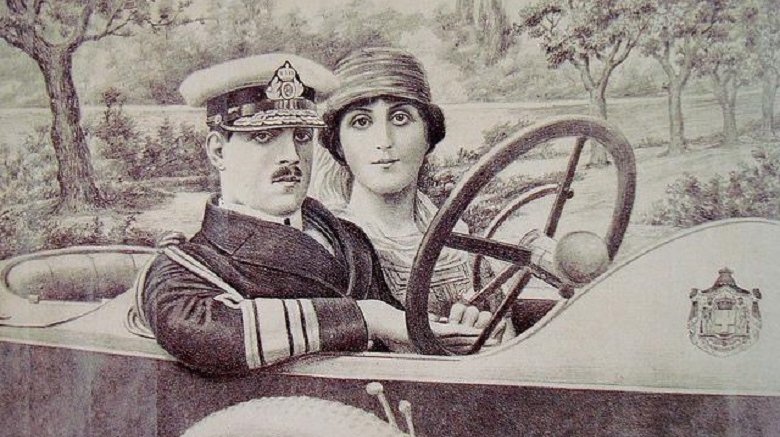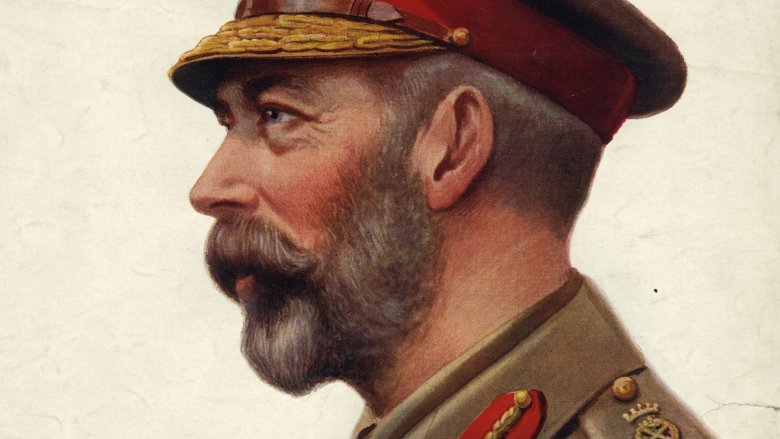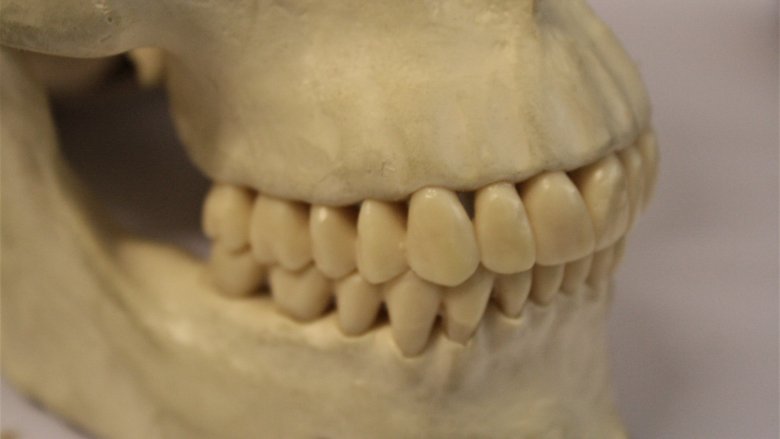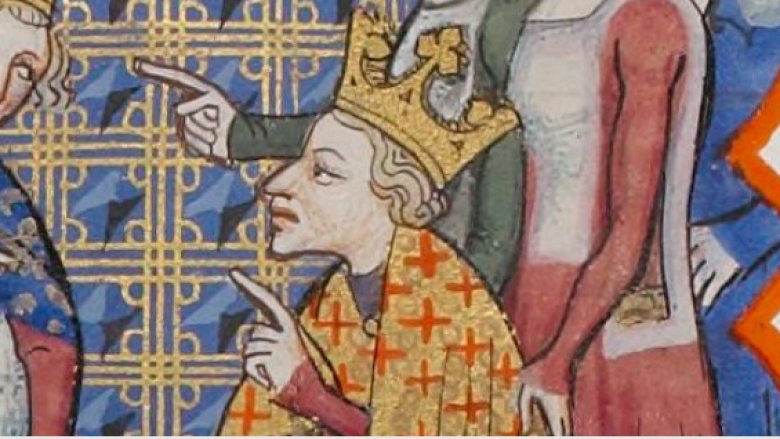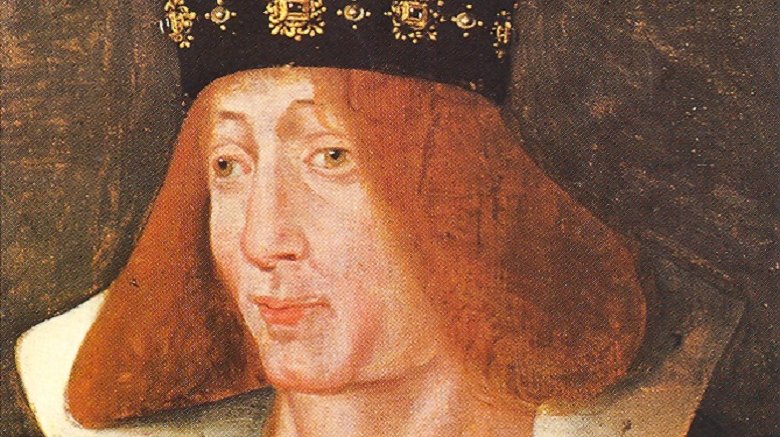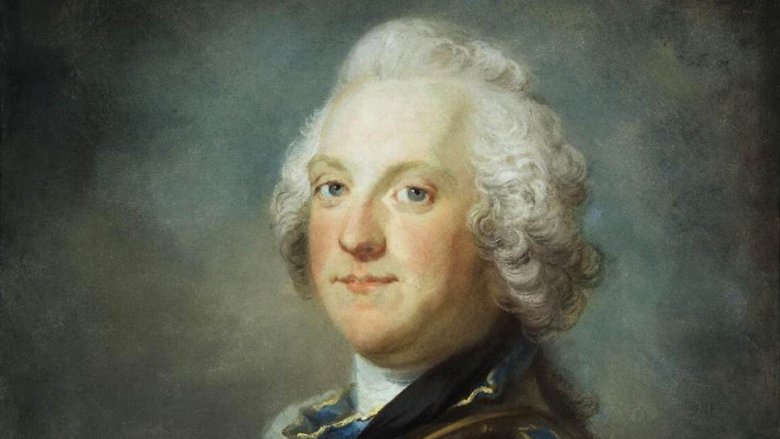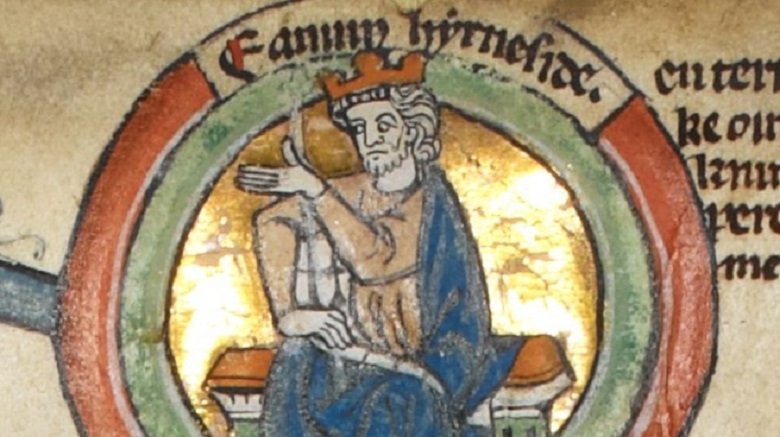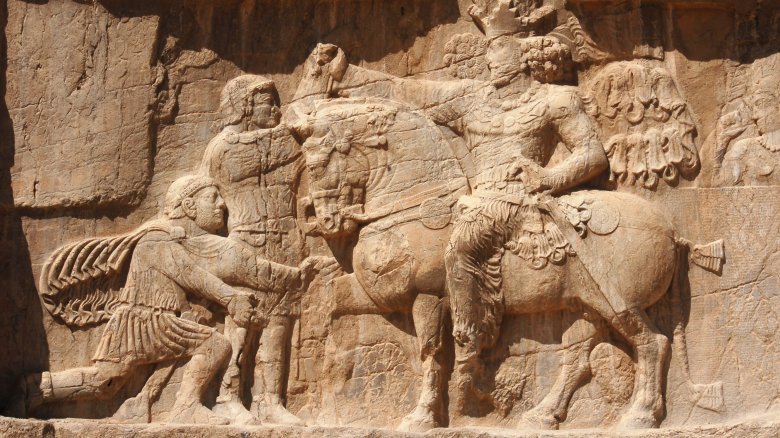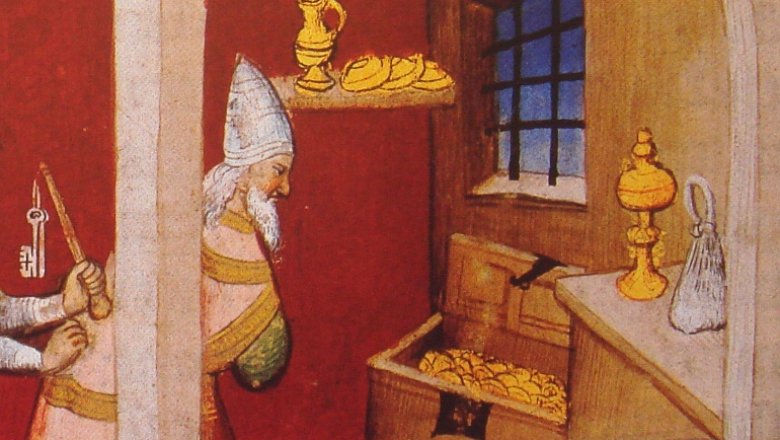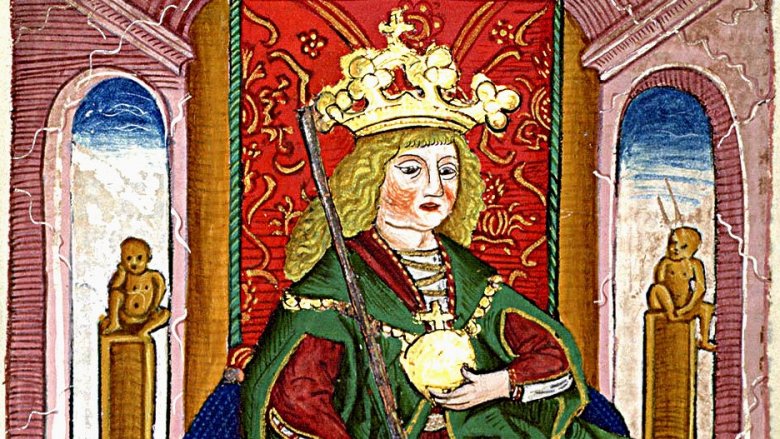The Truth Behind The Most Unusual Royal Deaths
Royals tend to live way more dramatic lives than their subjects. History is filled with stories of monarchs living large from the moment they are born. Everything from royal marriages to royal feasts to royal homes are crazier than anything a normal person could imagine. So it's fitting that a lot of royal deaths were just as weird as any other part of the royals' lives.
Over the years some strange royal deaths have become infamous. Everyone knows Catherine the Great met her end at the end of a horse, and Edward II found himself with a hot poker up the bum. Sadly, as much as you might want those stories to be true, they aren't. But don't fret because there are plenty of other bizarre royal deaths that historians know really did happen, plus some that records say happened, even if you have to take them with a decent-sized grain of salt.
King Alexander of Greece lost a fight to a monkey
King Alexander of Greece was never supposed to take the throne. At the time of the 24-year-old's ascension in 1917, Alexander's father and older brother were both very much alive. But the Sacramento Union reported that France, Great Britain, and Russia all had problems with the two guys in line ahead of Alexander, so those countries basically made him king. But his reign would be short.
On October 2, 1920, the king was hanging out at one of his palaces outside Athens and decided to go for a walk through the grounds, according to Royal Central. He took his German shepherd named Fritz with him. Apparently, one of the workers on the estate owned a Barbary macaque that he just let wander around, and the monkey attacked the dog. Alexander tried to break up the fight, and the monkey bit him. Two of the wounds were deep, but he was sure he was fine and really didn't want the public to find out a monkey got the better of their king.
But the bites ended up getting seriously infected. The king's doctors dithered. They considered amputating his leg to stop the spread of the infection, but no one wanted to take responsibility if it didn't work. So they basically did nothing because they were terrified of doing the wrong thing. That was definitely the incorrect approach, and 23 days after the attack the king died, technically killed by a freak monkey attack, but helped along by his own medical team.
King George V was euthanized by a speedball
King George V's doctor doesn't have any asterisk next to the fact that he straight-up murdered his king. As Royal Babylon: The Alarming History of European Royalty so succinctly puts it, what is "beyond dispute" is that George V "was killed by his doctor to meet a newspaper deadline." The king was a stickler for protocol and things being done the correct way, so he might have been fine with what the doctor did had he been asked. Of course, he wasn't asked.
By the evening of January 20, 1936, it was obvious King George was dying. He lapsed into a coma a couple days before, the family had gathered, and the funeral plans were well underway. It was just a matter of time. But he wasn't actually dead yet, and this concerned George's rather incompetent doctor, Lord Dawson. The New York Times reports the doctor wrote in his notes he wanted the announcement of the king's death to be "in the morning papers rather than the less appropriate evening journals." If the ever-so-proper king lingered too long, it would be an etiquette disaster. So Lord Dawson injected the king with morphine and cocaine. These days, that's called a speedball, and it's what killed John Belushi. It also killed King George in less than an hour.
At the time, everyone, including the king's family, thought he just died peacefully. The murdery truth wouldn't come out until 1986.
Sigurd Eysteinsson's biggest enemy killed him from beyond the grave
The death of Sigurd Eysteinsson the Powerful is recorded in a single document written 300 years after it happened, so it's kind of a toss-up whether it actually did or not. Still, it's a great story.
Despite his awesome sobriquet, Sigurd was more royal-adjacent, according to The Lore of Scotland: A Guide to Scottish Legends. He'd been given the Orkney and Shetland islands (north of Scotland) by his brother, then had been made an earl by the king of Norway, Harald Fine-Hair. But that wasn't enough for Sigurd, who went on to conquer a bunch of mainland Scotland as well. This wasn't cool with Maelbrigt, Earl of the Scots, who wanted that land himself.
Both sides hated each other, but they agreed to come together around 890 A.D. to negotiate like mature adults. That didn't work out. Both men showed up, but since they didn't trust each other, negotiations deteriorated and a battle broke out. The good news for Sigurd was his side won. Soon, Maelbrigt and all his men were dead. The bad news was Maelbrigt was going to get his revenge from beyond the grave.
Sigurd had his enemies decapitated and strapped their heads to his men's saddles to show how hard they won. Sigurd, of course, had Maelbrigt's head strung to his saddle. But Maelbrigt's nickname was "Tooth" because he had one giant fang protruding from his mouth. And while Sigurd was galloping along, that massive tooth stabbed him in the leg. The wound became infected, and Sigurd died.
King Charles II of Navarre turned into BBQ
King Charles II of Navarre's death was so unusual, as an 1803 book put it, "the tragical end of Charles is of a nature to fix attention." If you're pitying him, just know that his nickname was "The Bad," so maybe he kind of deserved it. According to History Collection, Charles' loyalty was extremely flexible, and during conflicts the king would switch sides to whichever one would bring him more money and power. At one point, he caused a riot in Paris. His bad deeds eventually caught up with him, and Charles became "the laughingstock of Europe."
So Vintage News says when the king met his grisly end, many considered it "divine justice" for being so terrible. By 1387, Charles was seriously unwell. He was bedridden and basically unable to move. Critics said all his bad deeds had finally worn him out. His doctors ordered the king be wrapped head to toe in brandy-soaked linen. This probably made some kind of medical sense at the time.
The woman assigned to wrap and sew up Charles finished her weird job and looked for something to cut the string. She couldn't find anything sharp, so she grabbed a candle to burn it off. Unsurprisingly, the alcohol-soaked king burst into flames. John Cassell's Illustrated History of England records it was actually a warming pan, not a candle, that ignited Charles, but whatever caused the fire it was unpleasant. He was horribly burnt but lasted another two weeks in agony before finally dying.
King James II of Scotland died doing what he loved, killing other people
King James II of Scotland's life was completely defined by violence from the beginning, so it's appropriate it ended that way, even if it was darkly comical. According to the BBC, James became king in 1437 because his father had been murdered. He was just 6. His mother then turned around and killed the entire branch of the royal family that was responsible for the regicide. Different factions continued to be all stabby and tried to control the king while he was a child. When James was 10, he attended a meeting between warring sides which ended in a slaughter so bad, it was the inspiration for the Game of Thrones "Red Wedding" scene. James watched the whole thing.
When he finally reached adulthood and took over officially, James continued the violence. In 1452, he invited the Earl of Douglas to dinner, started an argument, and stabbed him. This resulted in a war, which James eventually won. But peace didn't agree with the king, so he started fighting the English. This would lead to his downfall.
The Stewart Society says in 1460, James and his troops were besieging Roxburgh Castle using the new cutting-edge battle technology, cannons. James absolutely loved his fancy cannons. At some point, the king ordered one next to him fired, possibly because his queen had just showed up and he wanted to honor her arrival. But the cannon exploded, snapping the king's thigh in two, and he was "stricken to the ground and died hastily."
King Adolf Frederick had a killer sweet tooth
King Adolf Frederick became king of Sweden in 1751 because his aunt, the powerful Empress Elizabeth of Russia, put him there, according to Ancient Origins. But he was mostly a figurehead, with real power in Sweden held by their parliament, the Riksdag. Despite the fact he would have still been just some minor German noble without his aunt's actions, Adolf Frederick was power-hungry and tried to seize control from the Riksdag twice. He failed both times, and all the parliament did was raise his allowance, probably hoping he'd stop being annoying. Still, Vintage News says his 20-year reign was peaceful and saw lots of forward-thinking legislation, so it wasn't a total disaster.
His death, on the other hand, was ridiculous. On Fat Tuesday in 1771, Adolf Frederick was trying to squeeze in all the good stuff before he had to give things up for Lent. This meant a traditional feast, which was huge. And Adolf Fredrick apparently ate some of everything, including "lobsters, caviar, sauerkraut, kippers, and champagne." That combination alone is enough to make anyone sick, but the king still had room for dessert. Lots of dessert. Swedes traditionally eat semla on Fat Tuesday, which is "a sweet roll filled with cream." Back then, it was the only day of the year semla were served. So Adolf Fredrick ate 14 of them.
After this epic meal, the king complained of digestive problems. He died later that night and is now known as "the king who ate himself to death."
Edmund Ironside got something sharp in the bum
George R.R. Martin took a lot of plot threads from real history for A Song of Ice and Fire, particularly the more horrible stuff. No matter what the most twisted brain out there tries to invent, something worse probably actually happened at some point. So it is with the death of Edmund II.
Horror History reports Edmund was only on the throne a few months. The political climate in 1016 was crazy, with a bunch of people fighting to take over England. Then Edmund signed a peace treaty with one of his enemies, and someone appears not to have liked that much, according to The Mammoth Book of British Kings and Queens. Edmund was dead within days, but we still don't know why exactly. The official story at the time was natural causes, but two chroniclers had very different things to say.
Edmund may have been assassinated while on the toilet (a la Tywin Lannister). One 12th-century record says the killer hid underneath the privy (so, like, in the poop) and waited until the king sat down. Then the assassin took his sword and stabbed upward a couple times, slicing up Edmund's bowels. The bad guy left the sword stuck in the king's bottom side and fled. A different historian from the same period has a slightly different version, saying no one had to wait in poop because a crossbow was rigged to fire as the king sat on the toilet.
Emperor Valerian's death didn't stop his humiliation
Plenty of Roman emperors met terrible ends. It's weird anyone wanted to be emperor at all, considering the not-insignificant chance of getting murdered. Emperor Valerian's killer, the Persian ruler Shapur I, was particularly creative. Since we only have one record of what happened, according to A History of Roman Art, it's one of those deaths that historians have to take with a grain of salt.
Ancient History Encyclopedia says between 235 and 285 A.D., there were at least 20 emperors, and most died in battle or by assassinations. Valerian (pictured kneeling) was one of those 20ish, and he managed to lead the very unstable Roman Empire a whole seven years before he was captured by Shapur in 260. Valerian should definitely have known what was coming, but Shapur didn't kill him immediately. Big Think reports Valerian was held in "humiliating slavery," which included being used as a human footstool when Shapur needed to get on his horse.
Obviously, Valerian wanted out of this terrible situation. So he offered to raise a huge ransom in exchange for his release. To show his disdain for riches, Shapur poured molten gold down the former emperor's throat. You don't survive that. But the humiliation continued. After Valerian died, Shapur had him flayed, then dyed his skin "royal" purple, stuffed it with straw, and had it displayed in a Persian temple. Shapur used to show it to Roman ambassadors during negotiations, just to illustrate how powerful he was.
Caliph Al-Musta'sim died by loophole
Humans are great at killing each other. Over thousands of years they've made it a science. So when War History Online says February 13, 1258, was "one of the bloodiest days in human history," you know it was bad.
That day was the culmination of the successful siege of Baghdad. The city housed a million people and was one of the most important cities in the entire world. It was the center of the Abbasid Caliphate, an Islamic empire controlling most of the Middle East and Northern Africa, and in 1258 it was ruled by Caliph Al-Musta'sim Billah.
But the rival Mongols decided they wanted to control, like, everything, and sent the biggest army they ever assembled to take Baghdad. Al-Musta'sim was offered the chance to surrender his city without bloodshed but refused, for reasons that are unclear. After a 12-day siege, the Mongols entered the city and started slaughtering pretty much everyone. This one event effectively ended the Islamic Golden Age.
The Mongols also wanted to kill the caliph, but they had two problems. They had laws saying no man could kill a king, and no royal blood could ever be spilled on the ground. So they found a brilliant, if twisted loophole. According to History Collection, they rolled Al-Musta'sim up in a carpet and then trampled him with their horses. Technically, the horses killed him, not any man, and the carpet kept his blood from touching the ground, meaning it was all totally legal.
Martin of Aragon laughed himself to death
Martin of Aragon had a shaky claim to the throne, according to Clash of Thrones: The Power-Crazed Medieval Kings, Popes and Emperors of Europe. He was only supposed to be regent for his niece when Martin's brother died without sons in 1396. But not everyone wanted a woman in charge, so Martin took the throne for himself instead. History Collection says this meant he was constantly fighting unrest. Still, he got the nickname "The Humane," so he must not have been terrible.
It wouldn't be enemies who would bring about his downfall, though. In 1410, Martin ate a whole goose. This made his tummy very upset, as you'd expect. The king got into bed and called for his jester to come take his mind off it. But the jester took forever to get there. When the clown finally showed up, Martin asked him what had taken so long. He apologized, saying he'd been "in the next vineyard, your majesty, where I saw a young deer hanging by his tail from a tree, as if somebody had punished him for stealing figs."
That's not really funny. If anything, it's a sad image of animal abuse. But Martin thought it was the most hilarious thing ever. It's recorded he started laughing and kept at it for three hours, when he finally fell out of bed, dead. Maybe Martin is one of the few people to die of laughter, but some historians think his indigestion was an early symptom of a heart attack.
King Béla I was killed by his own furniture
Medieval Hungary was all over the place politically. The best Central Europe in the High Middle Ages can say for it is that at that time, everyone agreed on the idea there should be a king in charge of the country. But exactly who should be in charge was often very much up for grabs. This was partly because no one had invented rules for the order of royal succession. In most dynasties, a monarch (usually a man) dies and everyone knows the crown goes to his oldest child (or more commonly, the oldest son). This keeps various different royals from fighting over who gets to be king. Hungary didn't have any rules for who got to be in charge, so it was a free-for-all, which was recorded in great detail in the Illuminated Chronicle.
Enter Béla I. According to Encyclopedia Britannica, he ended up fighting a war against a 4-year-old to take the Hungarian throne in 1060. Béla also had to crush a pagan revolt and started preparing for war against the Holy Roman Emperor. He never got to start that last conflict, though.
Béla had a fancy throne with a big wooden canopy over the top. Shortly before going to battle with the emperor, he was chilling on it, probably wondering why everyone couldn't just get along. Then the wooden canopy collapsed on him. Considering the political climate, it definitely could have been a creative assassination via sabotage. Béla died from his injuries.
